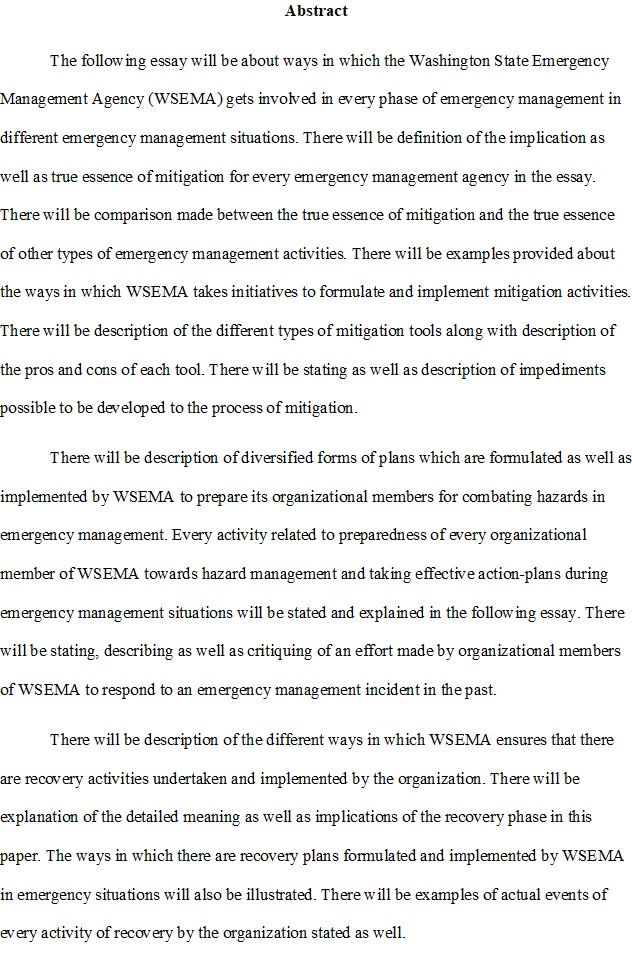


Q Instructions The Term (Core Assessment) Paper is due on Sunday before 11:59pm (CST). Follow the instructions in the syllabus to complete the assignment and refer to the Core Rubric for grading expectations. Total points possible 230. Core Learning Outcomes 1. Examine the historical evolution and future of emergency management and homeland security. 2. Understand and discuss the various cycles of emergency response: mitigation, preparedness, response, recovery. 3. Identify and define emergency management agencies and the roles and responsibilities of key participants at all levels of government from the law enforcement perspective. 4. Understand and define NIMS, Unity of Command, ICS and how they can be applied to emergency management. 5. Identify and investigate types of emergency incidents, potential terrorist threats & risks at various levels. Core Assessment: For CJ353, the student will select local or state government organization concerned with emergency management and planning, and research, analyze and critique on the organization’s emergency management and planning processes. The focus of the analysis is to examine the various emergency management planning components: Mitigation; Preparedness; Response; and Recovery, as well as how the organization uses Unity of Command and NIMS principles in its emergency management practices. The research should include web search, periodicals, publications and interviews of personnel involved with the Emergency Management planning of the organization and personal observations when possible. Students should view the information obtained with the purpose of critiquing the organization’s fulfillment of the components suggested by the text and other sources. Explain the pros and a con of the organization’s emergency management process. Have they anticipated emergencies that law enforcement will be responsible for? Have they coordinated with other local state and federal agencies? Have they developed plans for handling emergencies? Have they exercised these plans? What should the organization do to improve their emergency management planning and response? What have they excelled at? The purposes in conducting and writing this study are to improve your ability to synthesize, analyze, and evaluate information carefully and objectively, solve problems effectively, present your ideas in clear written form directed to a specific audience, in this case, your class. To complete this project, you should: 1. Select the agency in which you are interested. 2. Gather materials from the agency, such as planning reports and practical exercise reports. 3. Interview persons working in the planning section about their job(s) in person, telephone or e-mail. 4. Observe the activities in the organization if possible. 5. Describe the structure, practice, and procedures of the organization. 6. Describe the procedures you will use to conduct your study including interviewing some people who work in the section. 7. Describe the results of your study. 8. Make conclusions about your findings, including the positive and negative aspects you discovered. Your paper must include: 1. A cover page 2. Abstract 3. Introduction 4. Methodology section 5. Discussion 6. Reference page 7. Appendix which might include a summary of your interview(s) and organization charts of your agency and your section The text of this paper should be at least 2,000 words or eight pages typewritten or computer-generated, not counting the cover page, reference pages, and appendices. The paper shall be double spaced in either Times New Roman, 12 font. You must demonstrate that you understand the terminology and the concepts used in the section of the agency you study and that you know how to apply these concepts. You must demonstrate that you can synthesize, analyze, and evaluate information. You must correctly use APA format in source citation both in the body of the paper and in the reference page. Read the Plagiarism tab in the course.
View Related Questions